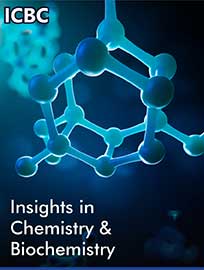 Research Article
Research Article
β-Blockers Simultaneous Nanoadsorption From Aqueous Solution Via Dispersive Solid-Phase Microextraction With1-Butyl-3-Methylimidazolium Tetrachloroferrate Functionalized Graphene Oxide GO-(Bmim) Fecl4
Farid Abu Shammala1* and Barry Chiswell2
1Department of Analytical Chemistry, University of Palestine, Palestine
2National Research Centre for Environmental Toxicology, University of Queensland, Australia
Farid Abu Shammala, Faculty of Pharmacy, Department of Analytical Chemistry, University of Palestine, El-Zahra City, Gaza, Palestine.
Received Date: March 09, 2020; Published Date: March 18, 2020
Abstract
The objective of this work was the synthesis of graphene oxide functionalized with the ionic liquid 1-butyl-3-methylimidazolium tetrachloroferrate and to examine its adsorption efficiency for seven β-blockers: propranolol, timolol, atenolol, oxprenolol, alpreolol, acebutolol and carazolol. The results in this work revealed that the ionic liquid is covalently attached to graphene oxide sheets. Batch adsorption experiments indicate that all β-blockers studied were adsorped by GO-(Bmim) FeCl4 nanocomposite, compound hydrophobicity is an important predictor of adsorption, with propranolol, the most hydrophobic compound studied, adsorbed to the greatest extent. This highly sensitive and specific method gives a limit of detection (LOD) of 10-20 pg/L and limits of quantification between 20 and 60 ng/L, respectively. The linearity of the method was satisfactory, with mean determination coefficients of 0.993 and 0.999, respectively. In order to test the applicability of the proposed method in real-life samples, the effluent from a municipal wastewater were collected and spiked with seven β-blockers at concentrations equal to 2 and 10 times the LOQs and analyzed with HPLC. The method is straightforward, environmentally safe, exhibits high enrichment factors and satisfactory recoveries from wastewater. To the best of our knowledge, this is the first time that a MIL-GO is used for analytical purposes in a practical, efficient and environmentally friendly microextraction approach for seven β-blockers. The highest removal rate was observed for propranolol, timolol, alpreolol and carazolol, ranging from 98%+/-1.5% to 99%±1.2%, and the lowest was observed for atenolol, oxprenolol, and acebutolol, ranging from 84%±2.6% to 86%±1.7%, respectively..
Keywords: Ionic liquid; Graphene oxide; β-blockers; Microextraction
-
Farid Abu Shammala. β -Blockers Simultaneous Nanoadsorption From Aqueous Solution Via Dispersive Solid-Phase Microextraction With1-Butyl-3-Methylimidazolium Tetrachloroferrate Functionalized Graphene Oxide GO-(Bmim) Fecl4. Insi in Chem & Biochem. 1(1): 2020. ICBC. MS.ID.000508.
-

This work is licensed under a Creative Commons Attribution-NonCommercial 4.0 International License.






